Taking a Root Cause Approach to Chronic Pain Management
November 13, 2025
13 min

Understanding Chronic Pain: Beyond Symptom Relief
What Is Chronic Pain?
Chronic pain is defined as pain that lasts longer than three months, extending well beyond the normal healing period. It affects about 20.9% of U.S. adults, making it a widespread health concern that can impact anyone, regardless of age or background.
Symptoms and Their Effects
Unlike acute pain, chronic pain often persists and can feel like aching, burning, stabbing, stiffness, or throbbing. Along with these physical sensations, individuals frequently experience related issues such as fatigue, insomnia, anxiety, irritability, and depression. This ongoing discomfort can severely diminish quality of life, interfering with daily activities and emotional well-being.
Importance of Finding the Root Cause
Effective treatment hinges on accurately identifying the underlying cause of pain. Chronic pain can stem from various sources including nerve damage, musculoskeletal conditions, degenerative diseases, or psychological factors like stress and anxiety. Comprehensive diagnosis, using physical exams and diagnostic tools like imaging and nerve studies, is essential. Targeted treatment strategies that address the root cause—rather than just relieving symptoms—lead to better outcomes and improved patient quality of life.
The Complex Origins of Chronic Pain: More Than Just Injury

Various Causes of Chronic Pain Including Physical Trauma, Degenerative Diseases, Neuropathic and Musculoskeletal Issues
Chronic pain is a persistent condition lasting longer than 12 weeks and can stem from multiple underlying causes. Physical trauma such as fractures, sprains, or surgeries often initiates pain that may linger due to nerve damage or scar tissue formation. Degenerative diseases like osteoarthritis and degenerative disc disease cause ongoing inflammation and discomfort, typically worsening with age. Neuropathic pain arises from nerve injury or dysfunction, characterized by burning, tingling sensations, or numbness; common examples include diabetic neuropathy and post-surgical nerve pain. Musculoskeletal problems, such as herniated discs, scoliosis, and muscle imbalances, are frequent contributors to chronic back pain, posing significant challenges in management. For more details on these causes, see Root Causes of Chronic Pain and Determining the Root Cause of Pain.
Psychological Factors Amplifying Pain Perception
Psychological elements play a critical role in chronic pain experience. Stress, anxiety, and depression can heighten pain sensitivity by influencing brain pathways responsible for pain processing. This amplification not only intensifies the perception of existing pain but also creates a feedback loop that exacerbates both mental health and physical symptoms. Addressing these psychological components through holistic and integrative approaches is essential for comprehensive pain management and overall well-being. Techniques like mindfulness-based pain relief and psychological therapies for pain contribute significantly to reducing pain perception.
Role of Central Sensitization and Nervous System Changes
Central sensitization is a phenomenon wherein the nervous system undergoes functional and structural changes, leading to increased responsiveness to pain stimuli. This process complicates pain diagnosis and treatment because the original source of pain may become difficult to pinpoint. Chronic pain involves alterations in the brain and spinal cord, amplifying pain signaling beyond the initial injury or condition. Understanding these neurophysiological mechanisms guides personalized therapies that focus on retraining the nervous system and improving quality of life through physical therapy, mindfulness, and other interdisciplinary approaches. For more information about central sensitization and treatments, visit Managing chronic pain and Multidisciplinary Pain Management.
Holistic Diagnostic Approaches: Pinpointing the Root Cause

Understanding the Comprehensive Diagnostic Process
Diagnosing chronic pain starts with gathering a detailed medical history and conducting a thorough physical examination. This evaluation helps clinicians identify patterns and possible causes behind the pain. Advanced imaging techniques such as X-rays, MRI scans, and nerve conduction studies play a critical role in revealing structural or nerve-related abnormalities contributing to the patient's symptoms. Such tools enable health professionals to look beneath the surface, improving diagnostic accuracy. For more details, see Determining the Root Cause of Pain and Advanced Diagnostics for Pain.
Classification of Pain Types
Pain manifests in various forms, primarily acute or chronic. Acute pain typically signals recent injury or illness and resolves as healing occurs, whereas chronic pain persists beyond three months and often involves complex mechanisms. Neuropathic pain arises from nerve damage or dysfunction, presenting as burning, tingling, or numbness. Nociceptive pain results from tissue injury or inflammation and commonly includes musculoskeletal pain. Differentiating between these types allows for targeted therapeutic approaches. More information is available at Types of Pain and Symptoms of chronic pain.
The Importance of Detailed Evaluation for Personalized Treatment
A meticulous and holistic diagnostic approach is essential in tailoring effective treatment plans. Recognizing the biological, psychological, and social factors influencing pain ensures that therapies address more than just symptoms. Personalized treatment may combine physical therapy for pain relief, chiropractic care services, acupuncture, and lifestyle modifications, optimized by insights gained from a comprehensive evaluation. This strategy not only enhances pain relief but also promotes long-term wellness and functional improvement. For holistic and personalized care strategies, see Holistic Approaches to Chronic Pain and Personalized Treatment Plans.
Chiropractic Care in Chronic Pain Management: A Holistic Approach

What types of musculoskeletal health and wellness services does a chiropractic practice typically offer?
Chiropractic practices provide a broad array of services aimed at improving musculoskeletal health and managing pain. These include various spinal adjustments using techniques such as diversified, impulse, activator, Thompson, and Gonstead chiropractic method. Soft tissue therapies like myofascial release and Active Release Techniques (ART) are also commonly offered to alleviate muscle tension and improve tissue function. Additionally, many clinics incorporate physical therapy modalities such as electrical stimulation, ultrasound, heat and ice applications, traction, cold laser therapy, and ARP wave therapy.
Complementary holistic services such as massage therapy, cupping, stretch therapy, acupuncture, and wellness counseling are frequently integrated to support overall musculoskeletal wellness. These interventions target conditions like back pain, neck pain, joint issues, and headaches. The goal is to provide safe, non-invasive, drug-free care through personalized treatment plans tailored to individual needs.
How can chiropractic care contribute to holistic musculoskeletal health?
Chiropractic care contributes significantly to holistic musculoskeletal health by ensuring proper alignment and function of the spine and joints. Through evidence-based manual adjustments, licensed chiropractors reduce pain, increase mobility, and promote the body’s natural healing processes. This approach addresses common complaints such as lower back pain, neck pain, headaches, and joint stiffness.
Beyond physical treatments, chiropractic care includes patient education on posture, ergonomics, and exercise routines, empowering individuals to take an active role in maintaining their musculoskeletal health. It is a conservative, non-invasive treatment suitable for all ages, with research backing its effectiveness in managing both acute and chronic pain. When combined with other therapies in a comprehensive pain management plan, chiropractic care supports long-term wellness and enhances patients’ quality of life.
How is chiropractic care integrated into pain management plans?
Chiropractic care is often an essential component of multidisciplinary pain management strategies. It complements physical therapy, massage, acupuncture, and lifestyle modifications to address the root causes of pain holistically. By focusing on musculoskeletal alignment and function, chiropractic adjustments reduce the need for medications and invasive procedures.
Practices like those in Torrance and Bolingbrook emphasize collaborative care where chiropractors work alongside other healthcare professionals to create individualized treatment plans. These plans incorporate diagnostic assessments and varied therapies tailored to the patient's specific conditions and goals. This integrated approach not only targets symptom relief but also addresses psychological and social factors that influence pain perception, ensuring comprehensive patient-centered care.
Choosing the Right Chiropractic Practitioner: Qualifications and Experience Matter
What qualifications or experience should one look for in a chiropractic practitioner?
Selecting a qualified chiropractic practitioner starts with verifying their credentials. Essential qualifications include holding a Doctor of Chiropractic (D.C.) degree from an accredited chiropractic college, reflecting rigorous postgraduate training. Licensure is mandatory and ensures the chiropractor meets state requirements to provide care. For more information on Chiropractor in Torrance CA and chiropractic care services, you can explore resources like Back On Point Wellness Chiropractor.
Experience matters greatly. Seek practitioners who specialize in musculoskeletal health conditions, including back, neck, and joint pain, as they demonstrate practical expertise in these areas. A chiropractor employing a holistic, patient-centered approach tailors treatments to individual needs, often combining manual therapies, rehabilitative exercises, massage, and modalities like electrical stimulation for comprehensive care. Learn about Holistic musculoskeletal health and related therapies including massage therapy for pain relief and Active Release Techniques (ART).
Collaborative practice is another important factor. Chiropractors who work alongside other healthcare providers—such as physical therapists, primary care physicians, and specialists—can coordinate integrated treatment plans, enhancing patient outcomes. Specializations in sports injuries, neurology, or nutrition indicate added knowledge beneficial for chronic pain management. Check relevant treatments and integrative approaches at Physical Therapy in Torrance and alternative treatments for chronic pain.
Choosing a chiropractor who focuses on wellness, embraces natural pain relief methods, and fosters patient empowerment makes a significant difference in recovery and long-term health. For comprehensive insights on holistic approaches to chronic pain and personalized pain management, these resources offer valuable guidance.
Integrative and Complementary Therapies: Enhancing Chronic Pain Management
What are acupuncture, massage therapy, mindfulness, meditation, yoga, and tai chi?
Acupuncture is a traditional Chinese medicine technique that stimulates nerves and muscles to alleviate pain and is widely used for conditions such as back pain and migraines. Massage therapy improves blood circulation, relaxes muscles, and lowers stress hormones, offering immediate relief for pain in the neck, shoulders, and osteoarthritis. Mindfulness and meditation focus on calming the nervous system and reducing pain perception by enhancing relaxation.
Yoga and tai chi are gentle movement therapies emphasizing breathing, balance, and mindfulness. These practices help manage chronic conditions like arthritis, fibromyalgia, and osteoarthritis by improving flexibility, reducing pain, and supporting emotional well-being. Learn more about yoga and tai chi for arthritis.
What scientific evidence supports these treatments, and what safety considerations should be noted?
Research supports acupuncture as more effective than sham treatments for low-back and neck pain, making it a recommended option for such conditions. Massage therapy can provide short-term relief, although evidence strength varies. Mindfulness-based interventions and cognitive behavioral therapy have shown benefits in reducing pain intensity and improving physical function.
Yoga and tai chi are associated with decreased disability and pain in chronic musculoskeletal conditions. Generally, these interventions are safe when administered by trained professionals; however, improper practice may cause soreness or injury, particularly in untrained individuals.
Nutritional supplements sometimes complement these therapies but should be used cautiously due to potential side effects and interactions. For an in-depth discussion on complementary health approaches for pain management, see the NCCIH resources.
How do holistic and interdisciplinary approaches complement conventional care?
Integrative pain management combines physical, psychological, and social therapies to address chronic pain comprehensively. Holistic strategies prioritize patient empowerment, emphasizing education and active participation in treatment plans. These approaches often enhance the effectiveness of conventional medicine by managing not just physical symptoms but also mental and emotional health. Explore holistic strategies in more detail at holistic approaches to chronic pain.
Clinics specializing in musculoskeletal health, such as chiropractic centers and physical therapy practices, frequently incorporate complementary therapies alongside standard care. This interdisciplinary model leads to more personalized treatment plans aimed at improving pain relief, functionality, and quality of life. For examples of interdisciplinary care, see resources from Back In Action Bodyworks Chiropractic and FYZICAL Bolingbrook Location.
Emphasizing lifestyle modifications, stress reduction, and mindful movement complements medical treatments, reducing reliance on medications and promoting long-term wellness. For more on managing chronic pain through lifestyle, see 10 Ways to Ease Pain and 8 Tips for Managing Chronic Pain.
Physical Therapy and Movement-Based Interventions: Restoring Function and Reducing Pain
What Physical Therapy Techniques Help Manage Chronic Pain?
Physical therapy offers a range of proven techniques tailored to alleviate chronic pain by improving flexibility, strength, and mobility. Key methods include stretching and nerve stimulation exercises that enhance muscle elasticity, nerve stimulation techniques that help reduce pain signals, and strengthening programs focused on building supportive muscle groups around affected areas. These therapies are personalized based on a thorough evaluation of posture, biomechanics, and range of motion to address individual patient needs effectively. Learn more about Physical Therapy for Pain Relief and Physical Therapy in Torrance.
How Do Movement Therapies Like Yoga, Tai Chi, and Pilates Contribute to Pain Relief?
Movement therapies such as yoga, Tai Chi, and Pilates emphasize gentle, controlled movements combined with mindful breathing. These practices support physical rehabilitation by promoting flexibility, balance, and relaxation, which collectively reduce muscle tension and improve overall physical function. They are especially beneficial for chronic conditions like arthritis, fibromyalgia, and osteoarthritis, offering accessible exercise options that can be adapted to various fitness levels. Explore Yoga and Tai Chi for Arthritis and Pilates classes and therapy options as complementary care.
Why Is Gradual Activity Increase and Tailored Exercise Important?
Gradual progression in activity level is crucial to avoid injury or exacerbation of pain. Starting with low-impact, gentle movements and progressively increasing intensity allows the body to adapt without strain. Tailored exercise plans developed by healthcare professionals ensure that patients engage safely in the right activities for their specific conditions, thereby maximizing pain relief and long-term functional improvement. Commitment to personalized regimens supports sustained recovery and better quality of life for individuals living with chronic pain. For more on this, visit Personalized Treatment Plans and Pain Self-Management Strategies.
Self-Management Strategies and Lifestyle Modifications for Sustainable Relief

How can stress reduction techniques like deep breathing and relaxation help manage chronic pain?
Stress and muscle tension often worsen chronic pain by increasing nervous system activity. Techniques such as deep, controlled breathing and progressive muscle relaxation help reduce muscle tightness and calm the mind. These practices lower anxiety and panic, which can amplify pain perception, contributing to a more manageable pain experience.
Why is sleep hygiene important in controlling chronic pain?
Poor sleep is common among individuals with chronic pain and can intensify their symptoms. Establishing a consistent sleep routine, creating a sleep-friendly environment, and avoiding caffeine and alcohol before bedtime are essential. Good sleep hygiene helps improve restorative sleep, reduces fatigue, and decreases the overall intensity of pain (NHS pain management programs, Tips for managing chronic pain).
What role does nutrition and avoidance of harmful substances play in pain management?
Maintaining a balanced diet rich in hydration and nutrients supports healing and reduces inflammation. Avoiding alcohol and tobacco is crucial since these substances may interfere with medication effectiveness and delay recovery. Nutritional support can enhance nerve and joint health, aiding in natural pain relief (Nutrition and Pain Management, Holistic approaches to chronic pain).
How do pacing activities and social support improve coping with chronic pain?
Pacing involves balancing activity and rest to prevent overexertion that can trigger pain flare-ups. Gradually increasing gentle activities like walking or stretching builds endurance without causing harm (Gentle activities for pain relief). Additionally, maintaining connections with friends and family offers emotional support, reduces feelings of isolation, and strengthens resilience against the challenges of chronic pain (Social support and pain management.
Integrating these self-management strategies with personalized treatment plans empowers patients to take active roles in their care, improves quality of life, and supports sustainable relief from chronic pain.
The Role of Psychological Factors in Chronic Pain and Their Management
How Do Stress, Anxiety, and Depression Affect Pain Perception?
Psychological factors like stress, anxiety, and depression significantly influence how individuals perceive and experience chronic pain. These factors can amplify pain signals, creating a vicious cycle where emotional distress worsens physical symptoms, and chronic pain exacerbates mental health challenges. The brain's response to ongoing stress sends increased pain signals, intensifying discomfort and reducing pain tolerance. For more information, see Psychological Factors in Chronic Pain and Managing chronic pain.
What Psychological Therapies Help Manage Chronic Pain?
Cognitive Behavioral Therapy (CBT) and hypnotherapy are effective psychological treatments for chronic pain. CBT helps patients recognize and control negative thought patterns related to pain, thereby reducing anxiety and improving coping skills. Hypnotherapy utilizes guided relaxation and focused attention to alter pain perception and decrease muscle tension. Both therapies aim to break the pain-anxiety cycle and enhance functional ability. Related resources include Psychological therapies for pain and mindfulness-based pain relief.
How Do Social Determinants and Patient Empowerment Influence Pain Management?
Social determinants of health, such as housing stability, social support, and mental well-being, play a critical role in chronic pain management. Recognizing these broader factors allows healthcare providers to adopt holistic, patient-centered approaches. Empowering patients through education about the neurological basis of pain and promoting self-efficacy encourages active participation in treatment plans. This can improve outcomes by fostering resilience and reducing reliance on medications. For further reading, see Integrative medicine alternatives for pain and social support and pain management.
Integrating psychological care within multidisciplinary pain management programs supports comprehensive relief, addressing not only the physical but also the emotional and social dimensions of chronic pain.
Empowering Patients Through Root Cause-Based Chronic Pain Care
The Importance of Comprehensive, Individualized Approaches
Chronic pain is multifaceted, often stemming from injuries, degenerative conditions, nerve damage, or psychological factors. Recognizing this complexity underscores the need for personalized treatment plans. Tailoring therapies to the patient’s unique root causes ensures more effective relief and improves overall well-being.
Combining Chiropractic, Physical, Psychological, and Complementary Therapies
Integrating diverse modalities offers a holistic strategy for pain management. Chiropractic care focuses on spinal alignment to enhance mobility and reduce discomfort. Physical therapy strengthens muscles and improves flexibility, helping restore function. Psychological therapies address emotional aspects, easing stress and anxiety linked to pain.
Complementary treatments such as acupuncture, massage therapy, yoga, and mindfulness meditation further support pain relief by reducing inflammation and calming the nervous system.
Encouragement for Early Consultation and Active Patient Participation
Early evaluation by healthcare professionals using advanced diagnostic tools is crucial for accurately identifying pain sources. Empowering patients to participate actively in their care promotes better outcomes. Informed patients who engage in self-management strategies, maintain healthy lifestyles, and collaborate with providers effectively control their chronic pain, enhancing quality of life and resilience.
Recent articles

Effective Corrective Exercises for Sustainable Pain Management

Taking a Root Cause Approach to Chronic Pain Management

Holistic Pain Management Techniques Without Surgery

How Patient Success Stories Validate Chiropractic Care Benefits

Spinal Decompression: Innovative Treatment for Sciatic Nerve Pain

Spinal Decompression Therapy: A Non-Invasive Approach to Sciatica Relief

Exploring Holistic Approaches Beyond Surgery for Pain Relief

Practical Lifestyle Advice to Support a Healthy Spine Every Day

Corrective Exercise Routines Designed for Long-Term Pain Prevention

Real Patient Stories: Overcoming Chronic Pain with Chiropractic Care

Lifestyle Changes That Promote a Healthy Spine and Prevent Injury

How Addressing the Root Cause of Pain Leads to Lasting Relief

Non-Surgical Holistic Therapies to Manage Chronic Pain Effectively

Nutritional Counseling's Impact on Physical Health and Healing

Benefits of Regular Chiropractic Care for a Stronger Back

Your First Chiropractic Visit: What to Expect and How to Prepare

Patient Experiences: How Chiropractic Care Transformed Their Lives

Exploring Holistic, Non-Surgical Options for Pain Management

Combining Physiotherapy with Chiropractic Treatments for Enhanced Recovery

Holistic Treatments That Offer Alternatives to Surgery for Pain Relief

Corrective Exercise Strategies for Long-Term Spine Health

How Physiotherapy Complements Chiropractic Adjustments for Better Outcomes

First-Time Chiropractic Visitors: What You Should Know

Understanding the Importance of Treating Pain at Its Source

Adopting Lifestyle Changes to Support Your Spine's Wellness

Utilizing Physiotherapy to Enhance Chiropractic Treatment Outcomes

The Key Advantages of Chiropractic Care for Back Pain Sufferers

Why Focusing on Root Causes Improves Pain Treatment Success

Corrective Exercises That Promote Lasting Pain Relief and Mobility

Sciatica Relief Through Targeted Spinal Decompression Techniques

Preparing for Your First Chiropractic Appointment with Confidence

Healthy Lifestyle Habits for Maintaining Spinal Alignment

Success Stories Highlighting Chiropractic's Role in Pain Recovery

Top Benefits of Chiropractic Care for Chronic Back Pain

Nutrition Tips to Boost Your Overall Wellness and Recovery

How Chiropractic Care Alleviates Back Pain Naturally

How Nutritional Counseling Supports Overall Wellness and Spine Health

Step-by-Step Guide to Your First Visit with a Chiropractor

Using Nutrition to Support Chiropractic and Overall Wellness

Integrating Physiotherapy in Your Chiropractic Healing Journey

How Physiotherapy Complements Chiropractic Adjustments for Faster Healing

Lifestyle Tips for Maintaining a Healthy Spine and Preventing Back Pain

Heartwarming Patient Testimonials Highlighting Chiropractic Success

How Proper Nutrition Supports Chiropractic and Physiotherapy Treatments

Combining Physiotherapy and Chiropractic Treatments for Optimal Recovery

Why Chiropractic Treatments Are Effective for Managing Back Pain

Choosing a Chiropractor: Tips for Finding a Trusted Provider

Integrating Physiotherapy and Chiropractic: Benefits and What to Expect

How Tailored Corrective Exercises Can Aid in Pain Management

Chiropractic Care: A Proven Solution for Alleviating Back Pain

What to Expect at Your First Chiropractic Visit: A Comprehensive Guide

The Importance of Root Cause Analysis in Effective Pain Management

The Role of Corrective Exercises in Sustaining Pain-Free Living

Combining Chiropractic and Physiotherapy for Comprehensive Pain Relief

How Addressing Underlying Causes Improves Pain Treatment Effectiveness

Maintaining Spinal Health Through Lifestyle Changes and Preventive Care

Understanding the Benefits of Chiropractic Adjustments for Back Pain Sufferers

Spinal Decompression Therapy: A New Hope for Sciatica Relief

Lifestyle Recommendations to Support a Healthy Spine and Reduce Pain

Choosing the Right Chiropractor: Key Factors to Consider Before Your First Appointment

Non-Invasive Treatment Alternatives: A Holistic Approach to Pain Relief

Corrective Exercises to Support Long-Term Relief from Chronic Pain

Exploring Non-Surgical Approaches to Spine Health and Wellness

Tips for Daily Habits That Keep Your Spine Strong

Success Stories: How Chiropractic Treatments Changed Lives

Why Focusing on the Root Cause of Pain Leads to Better Outcomes

Nutritional Counseling and Its Impact on Overall Wellness and Recovery

Patient Testimonials That Showcase the Power of Chiropractic Care

Preparing for Your First Chiropractic Appointment: What You Need to Know

Holistic Treatment Options: Beyond Surgery for Pain Relief

Holistic Pain Relief Methods That Avoid Surgery

Nutritional Strategies for Supporting Spine Health and Recovery

First Chiropractic Visit: What Happens and How to Prepare

Chiropractic Patient Success Stories: Inspiring Journeys to Wellness
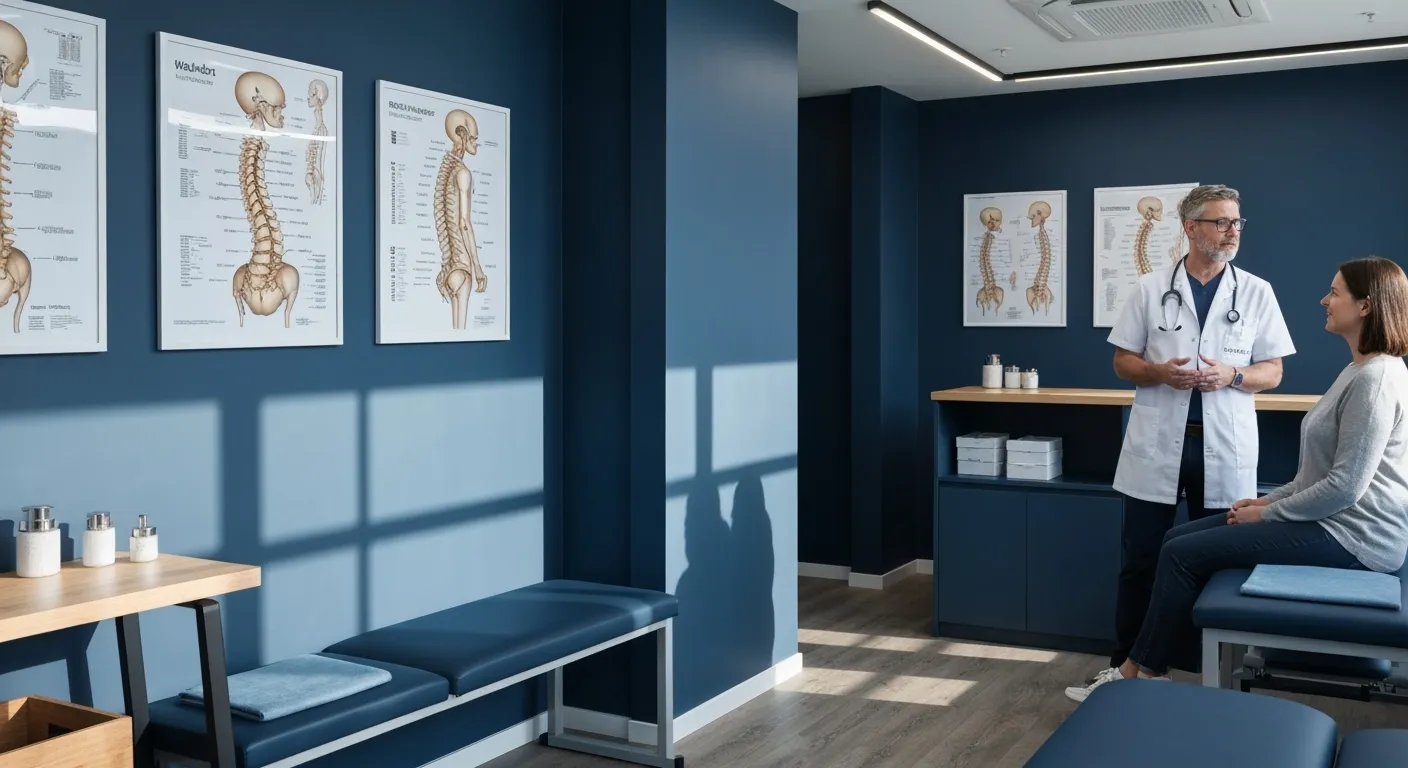
Effectiveness of Spinal Decompression Therapy in Managing Sciatic Nerve Pain

Addressing Pain at Its Source: Why Treating the Root Cause Matters

Corrective Exercise Programs Designed for Long-Term Pain Prevention

Healthy Lifestyle Advice for Maintaining Spinal Alignment
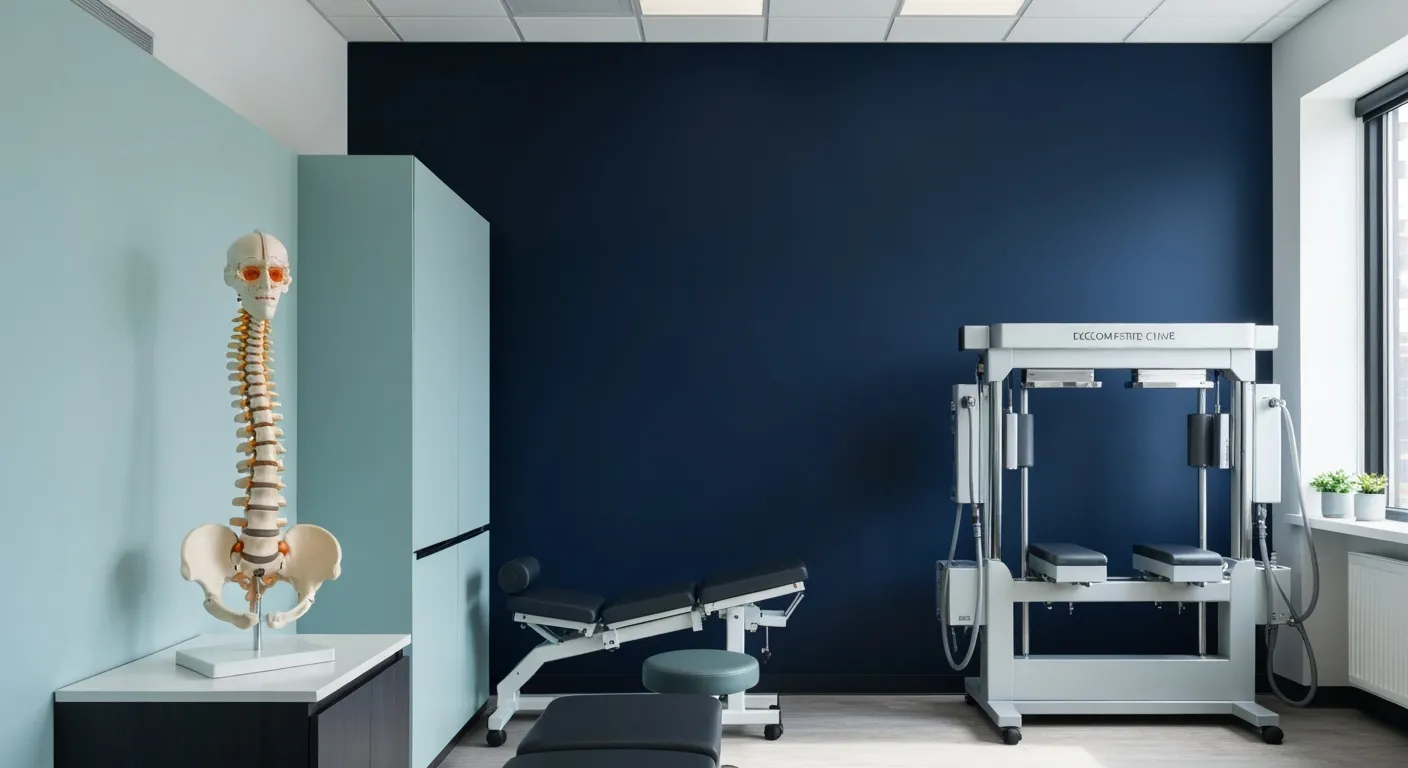
Understanding Spinal Decompression as a Treatment for Sciatica Pain
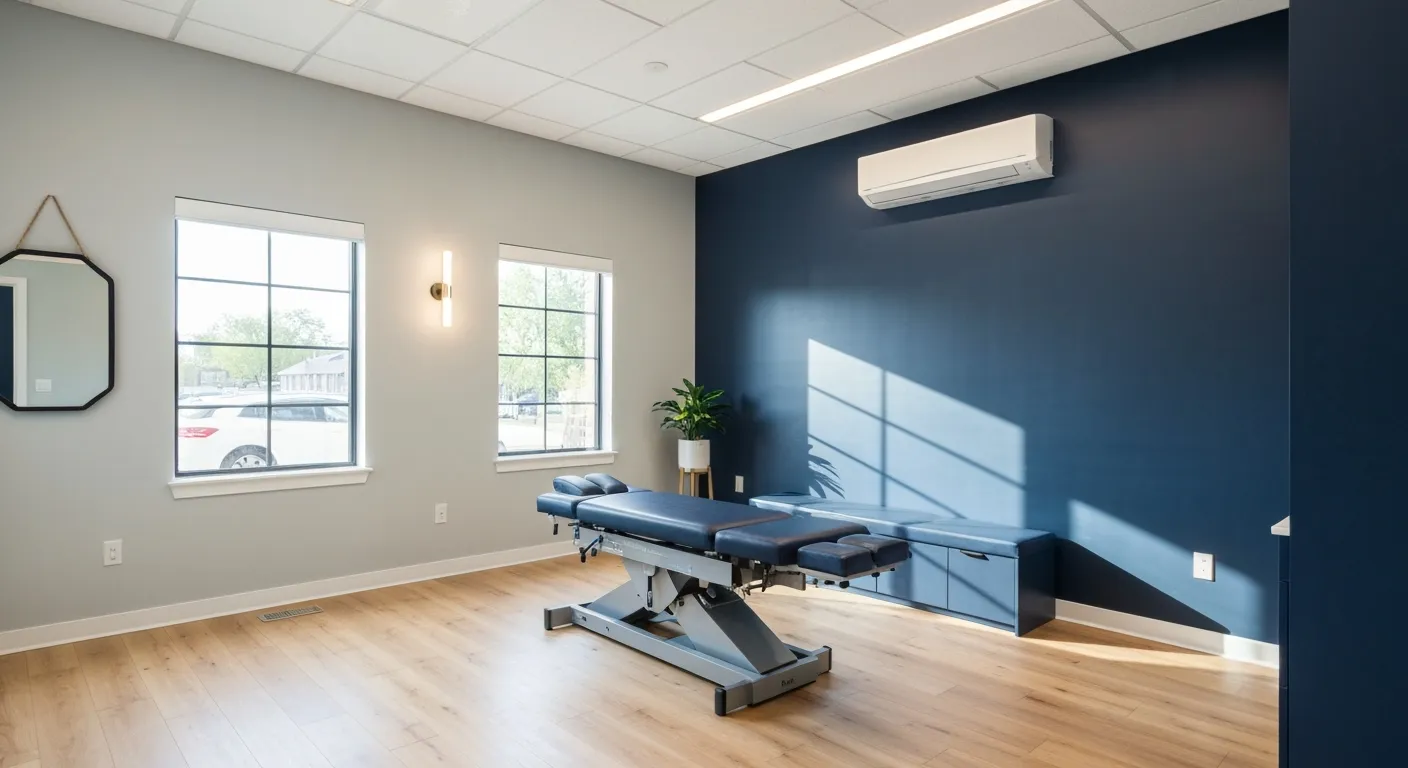
Benefits of Chiropractic Care Specifically for Back Pain Relief

Understanding Gait Analysis in Physiotherapy
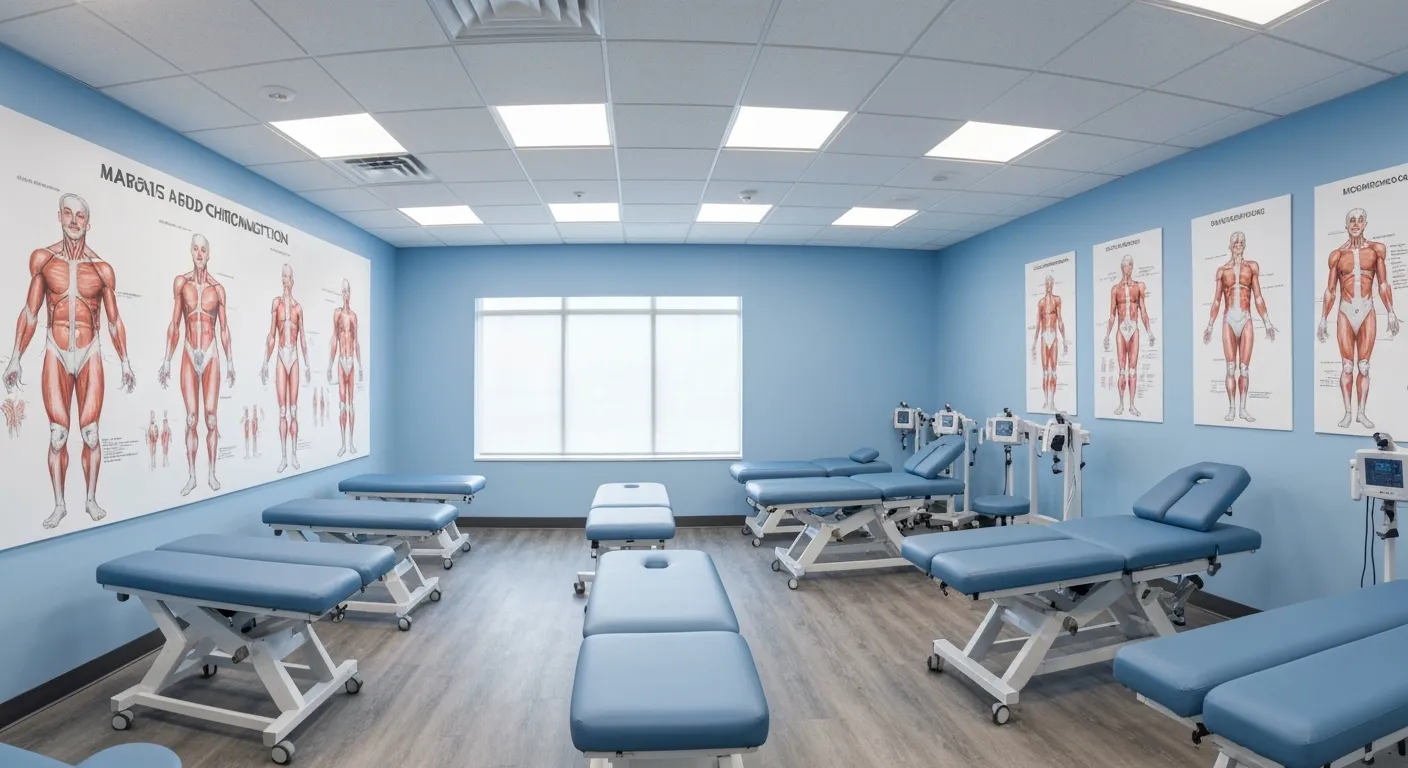
The Difference Between Muscle Soreness and Dysfunction

Workplace Stress Statistics: How Muscle Tension Impacts Productivity

How Physiotherapy Improves Mobility for Seniors

How to Communicate Pain Levels to Your Therapist Effectively
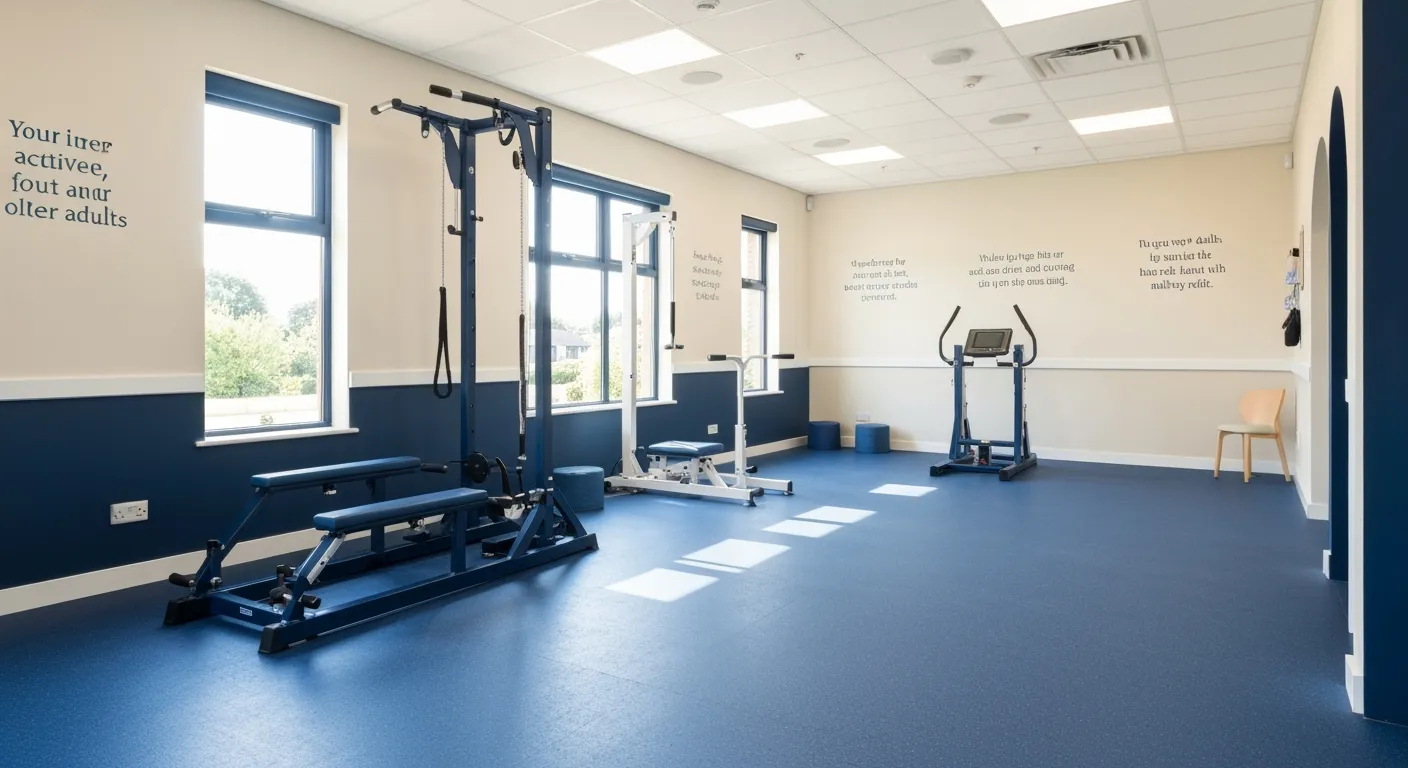
Physiotherapy Interventions for Balance and Fall Prevention

How Physiotherapy Helps Post-Surgical Recovery

Lifestyle Advice Everyone with Back Pain Should Follow

Chiropractic Industry Statistics: Growth, Demand, and Future Trends

Myofascial Release: What It Is and Why It Matters

Chiropractic Care vs. Traditional Medicine: Cost and Effectiveness Statistics

Ergonomic Workspace Tips to Support Spinal Health

Why Proper Breathing Matters During a Massage Session
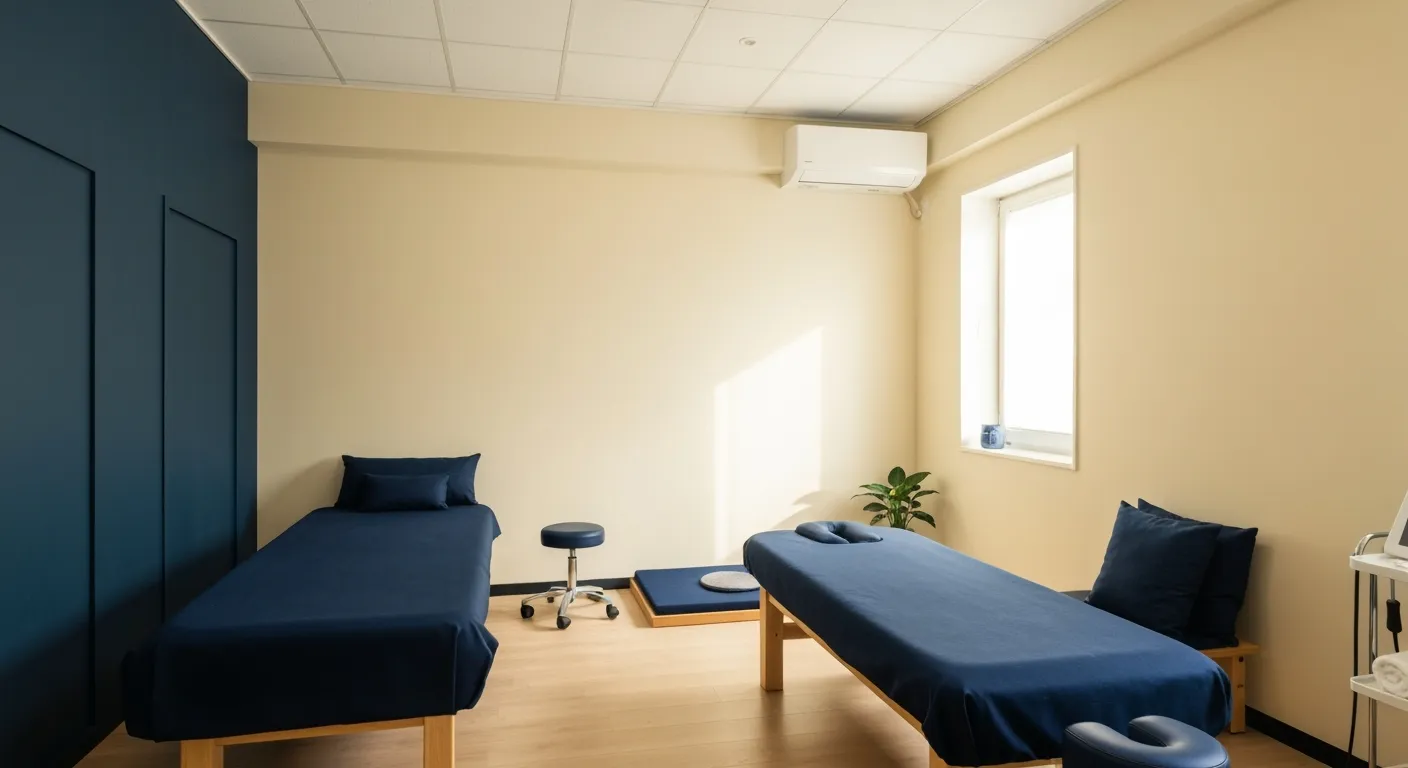
Client Retention Trends in the Therapeutic Bodywork Industry

Why Physiotherapy Is Key in Preventing Re-Injury

How Massage Therapy Supports Natural Pain Relief
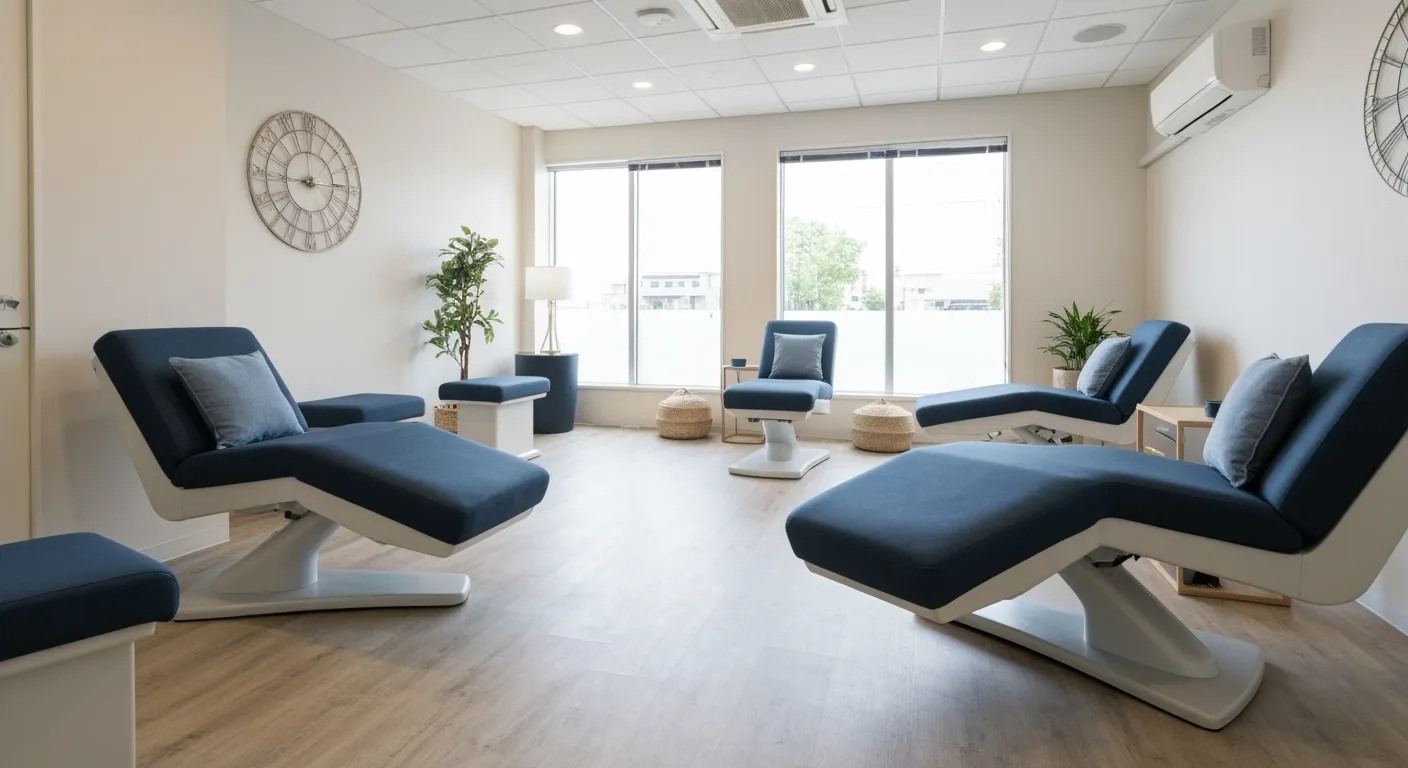
Healthcare Cost Reduction Through Preventive Bodywork Use

Athlete Massage Statistics: Pre-Event vs. Post-Event Outcomes

Massage for Migraine and Headache Relief

